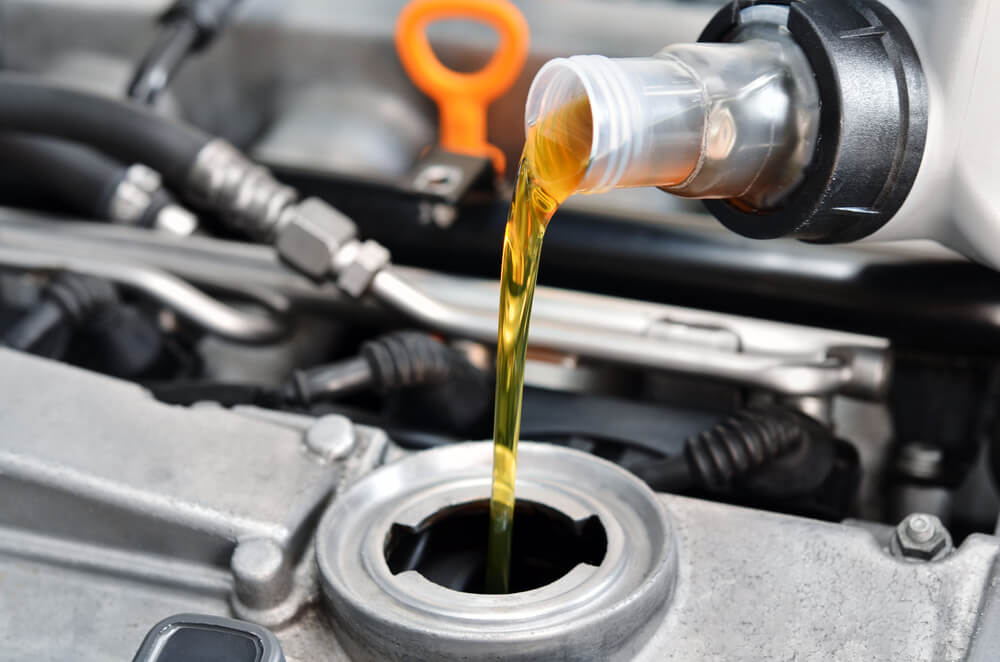Title: “Effective Ways to Remove Motor Oil from Skin: A Comprehensive Guide”
Introduction:
Motor oil is a ubiquitous substance in our daily lives, indispensable for the smooth functioning of our vehicles and machinery. However, its accidental contact with the skin can pose significant challenges. The stubborn nature of motor oil makes it resistant to traditional soap and water, often leaving individuals grappling with how to effectively remove it without causing harm.
In this comprehensive guide, we delve into the most efficient methods for removing motor oil from the skin, ensuring both cleanliness and safety. From household remedies to specialized solutions, we explore techniques that not only rid the skin of motor oil but also mitigate potential health risks associated with prolonged exposure.
Join us as we unravel the mysteries surrounding motor oil removal, empowering you with the knowledge to tackle this common dilemma with confidence and ease.
Composition of motor oil:
Understanding its composition is crucial for comprehending its behavior and effectiveness in lubricating engines. Here’s a closer look at the key components that make up motor oil:
- Base Oils:
- Base oils form the foundation of motor oil and make up the majority of its composition, typically comprising 70% to 90% of the total volume. These oils can be derived from petroleum crude oil or synthesized from chemical compounds.
- Base oils provide lubrication and reduce friction between moving parts within the engine, preventing wear and tear.
2. Additives:
- Additives are carefully formulated substances added to motor oil to enhance its performance and protect the engine under various operating conditions.
- Viscosity modifiers improve the oil’s viscosity-temperature relationship, ensuring consistent flow and lubrication across a wide range of temperatures.
- Detergents and dispersants help keep the engine clean by preventing the buildup of sludge, varnish, and other deposits that can impede performance.
- Anti-wear additives form a protective film on metal surfaces, reducing friction and minimizing wear on critical engine components.
- Antioxidants and corrosion inhibitors protect against oxidation and corrosion, extending the oil’s lifespan and preserving engine integrity.
- Foam inhibitors prevent the formation of foam, which can impair lubrication and lead to engine damage.
3. Viscosity Index Improvers:
- Viscosity index improvers (VIIs) are polymers added to motor oil to modify its viscosity characteristics across different temperature ranges.
- These additives allow the oil to maintain its viscosity and lubricating properties even in extreme cold or hot conditions, ensuring optimal engine protection.
4.Friction Modifiers:
- Friction modifiers are additives designed to reduce friction between moving parts, improving fuel efficiency and engine performance.
- By forming a slippery film on metal surfaces, friction modifiers minimize energy loss due to friction, leading to smoother operation and reduced wear on engine components.
5.Pour Point Depressants:
- Pour point depressants are additives that lower the temperature at which motor oil solidifies or “gels,” improving its flow properties in cold climates.
- By preventing the formation of wax crystals that can obstruct oil circulation, pour point depressants ensure reliable engine startup and lubrication even in frigid conditions.
Adherence properties to skin
Understanding the adherence properties of motor oil to the skin is essential to know what removes motor oil from skin without causing damage or irritation. Motor oil, whether synthetic or mineral-based, possesses unique characteristics that contribute to its stubborn adherence upon contact with the skin:
- Viscosity:
- Motor oil typically exhibits high viscosity, meaning it has a thick and sticky consistency. This viscosity allows it to cling tightly to the skin upon contact, making it challenging to remove with conventional methods such as water and soap.
2.Hydrophobic Nature:
- Motor oil is inherently hydrophobic, meaning it repels water. This hydrophobicity prevents water from easily penetrating the oil layer on the skin’s surface, further hindering its removal through simple rinsing.
3. Penetrative Properties:
- Despite its thick consistency, motor oil can penetrate the outer layers of the skin due to its small molecular size. This penetration can occur more readily in areas where the skin is thinner or compromised, such as cuts or abrasions, exacerbating the difficulty of removal.
4. Adhesive Properties:
- Motor oil contains components that enable it to adhere strongly to the skin, forming a resilient film that resists mechanical and chemical removal. This adhesive property ensures prolonged contact with the skin, increasing the risk of skin irritation and potential health hazards.
5. Temperature Sensitivity:
- The adherence of motor oil to the skin may be influenced by temperature fluctuations. Higher temperatures can soften the oil, increasing its spreadability and adherence, while lower temperatures may cause it to solidify, making removal even more challenging.
Given these adherence properties, it is crucial to employ appropriate techniques and products specifically designed to break down and remove motor oil from the skin effectively. Utilizing methods that address the oil’s viscosity, hydrophobic nature, adhesive properties, and penetrative tendencies can help mitigate the challenges associated with its removal and ensure thorough cleansing without causing harm to the skin.
Potential health hazards associated with exposure to motor oil:
Exposure to motor oil can pose significant health hazards due to its chemical composition and potential for skin absorption, inhalation, and ingestion. Understanding these risks is crucial for implementing appropriate safety measures and minimizing the adverse effects on health. Here are the potential health hazards associated with exposure to motor oil:
- Skin Irritation and Dermatitis:
- Direct contact with motor oil can cause skin irritation, redness, and inflammation, particularly in individuals with sensitive skin or prolonged exposure. The oil’s abrasive nature may strip the skin of its natural oils, leading to dryness, cracking, and dermatitis.
2. Chemical Burns:
- Motor oil contains various chemicals, such as hydrocarbons and additives, which can cause chemical burns upon contact with the skin. Prolonged exposure or contact with concentrated forms of motor oil may result in severe burns, blistering, and tissue damage.
3. Respiratory Issues:
- Inhalation of motor oil vapors or aerosols generated during handling, storage, or engine operation can irritate the respiratory tract and lead to respiratory issues such as coughing, wheezing, shortness of breath, and exacerbation of pre-existing conditions such as asthma or bronchitis.
4. Systemic Toxicity:
- Certain components of motor oil, such as benzene, toluene, and polycyclic aromatic hydrocarbons (PAHs), are known carcinogens and can cause systemic toxicity upon absorption into the bloodstream. Chronic exposure to these chemicals may increase the risk of cancer, neurological disorders, and reproductive issues.
5. Environmental Contamination:
- Improper disposal of motor oil can result in environmental contamination, posing risks to aquatic life, soil quality, and groundwater. Spills or leaks of motor oil may also contaminate surface water bodies, leading to ecological damage and long-term environmental consequences.
6.Fire and Explosion Hazards:
- Motor oil is flammable and can ignite at high temperatures or in the presence of ignition sources such as sparks, flames, or hot surfaces. Improper handling or storage of motor oil near heat sources or open flames may increase the risk of fire or explosion.
7. Hazardous Waste Exposure:
- Workers involved in the recycling, disposal, or cleanup of motor oil may face exposure to hazardous waste materials and contaminants. Proper personal protective equipment (PPE) and safety protocols are essential to minimize the risk of exposure and prevent adverse health effects.
Given these potential health hazards, it is imperative to handle motor oil with caution, adhere to safety guidelines, and implement appropriate preventive measures to protect oneself and others from harm. This includes wearing protective clothing, gloves, and respiratory equipment, as well as ensuring proper ventilation and containment of spills or leaks to prevent environmental contamination and health risks.
Immediate Steps to Take After Contact with Motor Oil
Immediate action following contact with motor oil is crucial to minimize skin irritation, prevent absorption of harmful substances, and ensure effective removal of the oil. Here are optimized steps to take after encountering motor oil:
- Avoid Spreading:
- Immediately halt any activity that may spread the motor oil further on the skin or into clothing. Avoid rubbing the affected area, as this can exacerbate the spread of the oil and increase the risk of skin irritation.
2. Containment:
- If possible, contain the affected area by covering it with a clean cloth or paper towel to prevent the oil from coming into contact with other surfaces, clothing, or body parts.
3. Gentle Blotting:
- Use a clean cloth or paper towel to gently blot excess motor oil from the skin. Avoid applying excessive pressure, as this can force the oil deeper into the skin pores.
4..Absorbent Materials:
- Apply an absorbent material such as talcum powder, cornstarch, or baking soda to the affected area. These substances can help absorb excess oil and facilitate its removal.
5.Avoid Water:
- Refrain from using water to rinse off the motor oil initially, as water can further spread the oil and make it more difficult to remove. Water may also be ineffective in breaking down the oil due to its hydrophobic nature.
6. Protective Gloves:
- If available, wear disposable gloves to prevent further contact with the motor oil and to protect the hands from potential irritation or absorption of harmful substances.
7. Assessing the Severity:
- Evaluate the severity of the exposure. If the motor oil has come into contact with a large area of skin, or if there are signs of skin irritation, seek medical advice promptly.
8. Seek Medical Attention:
- If the motor oil has entered the eyes, mouth, or open wounds, rinse thoroughly with water and seek medical attention immediately. Ingestion or contact with sensitive areas can lead to serious health complications.
9. Documenting Exposure:
- Keep track of the details surrounding the exposure to motor oil, including the time, location, and duration of contact. This information may be helpful for medical professionals in assessing the situation and providing appropriate treatment.
By taking immediate steps to address contact with motor oil, individuals can minimize the potential health risks associated with exposure and facilitate the subsequent removal of the oil from the skin.
Methods for removing motor oil from skin
Removing motor oil from the skin requires effective techniques and products tailored to break down the oil’s stubborn nature and ensure thorough cleansing without causing irritation or damage. Here are optimized methods for removing motor oil from the skin:
- Soap and Water:
- Start by washing the affected area with a gentle soap and lukewarm water. Use a mild, oil-cutting soap or dishwashing detergent to help break down the motor oil. Thoroughly lather the soap over the skin and rinse with water. Repeat as necessary until the oil is removed.
2. Petroleum Jelly:
- Apply a generous amount of petroleum jelly or mineral oil to the affected skin and massage gently. The petroleum jelly helps dissolve and loosen the motor oil from the skin’s surface. Allow it to sit for several minutes, then wipe away the oil and petroleum jelly mixture with a clean cloth or paper towel.
3. Baking Soda Paste:
- Mix baking soda with a small amount of water to create a paste. Apply the paste to the affected area and gently massage it into the skin. Baking soda acts as a natural abrasive and helps absorb excess oil while breaking down the motor oil’s residue. Rinse thoroughly with water and pat dry.
4. Commercial Degreasers:
- Use a commercial degreasing product specifically designed for removing oil and grease from the skin. Follow the manufacturer’s instructions carefully and avoid prolonged exposure to the product, as some degreasers may contain harsh chemicals that can irritate the skin.
5. Natural Oils:
- Apply natural oils such as coconut oil, olive oil, or baby oil to the affected skin. Massage the oil into the skin and let it sit for a few minutes to allow it to penetrate and break down the motor oil. Wipe away the oil and residue with a clean cloth or paper towel, then wash the skin with soap and water.
6. Hand Sanitizer:
- Hand sanitizers containing alcohol can effectively dissolve motor oil from the skin. Apply a small amount of hand sanitizer to the affected area and massage gently. The alcohol helps break down the oil, making it easier to remove. Rinse thoroughly with water and pat dry.
7. Dishwashing Liquid:
- Dishwashing liquids designed to cut through grease can also be effective in removing motor oil from the skin. Apply a small amount of dishwashing liquid to the affected area and lather thoroughly. Rinse with water and repeat if necessary until the oil is removed.
8. Warm Compress:
- For stubborn oil stains, apply a warm compress to the affected area to help soften and loosen the oil. Soak a clean cloth in warm water and place it over the skin for several minutes. Gently wipe away the oil and residue with the warm cloth, then wash the skin with soap and water.
See the below video for getting extra information to clean your greesy hand
By employing these optimized methods for removing motor oil from the skin, individuals can effectively cleanse the affected area and minimize the risk of skin irritation or health hazards associated with prolonged exposure to motor oil.
Additional tips and precaution:
In addition to employing effective methods for removing motor oil from the skin, it’s essential to follow additional tips and precautions to ensure thorough cleansing and minimize the risk of skin irritation or health complications. Here are optimized tips and precautions to consider:
- Avoid Harsh Chemicals:
- When selecting cleaning products or solvents for removing motor oil, opt for gentle and skin-friendly options. Harsh chemicals can strip the skin of its natural oils and exacerbate irritation. Look for products labeled as “mild” or “gentle” to minimize the risk of adverse reactions.
2. Use Protective Gear:
- Wear protective clothing, such as gloves and long sleeves, when handling motor oil or performing tasks that involve potential exposure. Protective gear helps prevent direct contact with the skin and reduces the risk of oil splashes or spills.
3. Dispose of Contaminated Materials Properly:
- Dispose of any contaminated clothing, towels, or cleaning materials properly to prevent further exposure to motor oil. Seal them in a plastic bag or container before disposal to contain the oil and minimize environmental contamination.
4. Avoid Abrasive Materials:
- Refrain from using abrasive materials, such as steel wool or rough scrubbing pads, to remove motor oil from the skin. These materials can cause irritation, abrasions, and damage to the skin’s surface. Opt for gentle methods, such as soft cloths or sponges, to avoid aggravating the skin.
5. Seek Medical Attention for Severe Cases:
- If you experience severe skin irritation, allergic reactions, or prolonged exposure to motor oil, seek medical attention promptly. A healthcare professional can provide appropriate treatment and advice to alleviate symptoms and prevent complications.
6. Keep Skin Moisturized:
- After removing motor oil from the skin, moisturize the affected area with a gentle and hydrating lotion or cream. Moisturizing helps replenish lost moisture, soothe dryness, and restore the skin’s natural barrier function. Choose fragrance-free and hypoallergenic products for sensitive skin.
7. Monitor for Symptoms:
- Monitor the skin for any signs of irritation, redness, or inflammation following exposure to motor oil. If you notice any unusual symptoms or persistent discomfort, consult a healthcare professional for further evaluation and management.
8. Educate Others:
- Share knowledge about safe handling practices and effective methods for removing motor oil from the skin with friends, family, and colleagues. By raising awareness, you can help prevent accidents and promote skin safety in various settings.
Conclusion:
In conclusion, effectively removing motor oil from the skin requires a combination of efficient methods and proactive precautions to ensure thorough cleansing and minimize potential health risks. By understanding the composition of motor oil, its adherence properties, and the immediate steps to take after contact, individuals can navigate the process with confidence and efficacy.
Through the utilization of methods such as soap and water, petroleum jelly, baking soda paste, and natural oils, along with the implementation of protective gear and gentle cleaning practices, the stubborn residue of motor oil can be effectively eradicated from the skin. Additionally, by following additional tips and precautions, such as avoiding harsh chemicals, disposing of contaminated materials properly, and seeking medical attention for severe cases, individuals can safeguard their skin’s health and well-being.
Ultimately, by prioritizing skin safety and employing optimized techniques, individuals can effectively remove motor oil from the skin, mitigating the risks of irritation, allergic reactions, and other adverse effects. Empowered with knowledge and proactive measures, individuals can confidently address encounters with motor oil, ensuring a clean, healthy, and protected skin surface.
Useful link
https://benchmarkabrasives.com/blogs/safety-and-cleanliness/how-to-remove-oil-from-hands
Frequently Asked Questions (FAQ) About Removing Motor Oil from Skin
What’s the best way to remove motor oil from my skin? A: The most effective method depends on factors such as the amount of oil, skin sensitivity, and available resources. Generally, using a combination of soap and water, petroleum jelly, or natural oils like coconut oil can help break down and lift the oil from the skin.
Q: Can I use dish soap to remove motor oil from my skin? A: Yes, dish soap can be effective in cutting through grease, including motor oil. Opt for a mild dish soap and lather it thoroughly with water to help lift the oil from the skin.
Q: Is it safe to use solvents or degreasers to remove motor oil from my skin? A: While solvents or degreasers can effectively remove motor oil, they may contain harsh chemicals that can irritate or damage the skin. It’s essential to use them cautiously and follow the manufacturer’s instructions carefully. If possible, opt for gentler alternatives first.
Q: How long should I wash my skin to remove motor oil completely? A: There’s no set time limit, but it’s important to wash the affected area thoroughly until the oil is visibly removed. Depending on the severity of the oil residue, this may require multiple washings and gentle scrubbing.
Q: Can I use hot water to remove motor oil from my skin? A: Hot water can help soften the oil and make it easier to remove, but be cautious not to use water that’s too hot, as it can scald the skin. Lukewarm water is generally recommended for washing motor oil off the skin.
Q: What should I do if I experience skin irritation or redness after removing motor oil? A: If you experience skin irritation or redness after removing motor oil, stop the cleaning process immediately and rinse the affected area with water. Apply a soothing lotion or cream to help calm the skin, and avoid further exposure to irritants.
Q: Is it necessary to see a doctor if I accidentally ingest motor oil while trying to remove it from my skin? A: Yes, ingesting motor oil can be harmful, and it’s essential to seek medical attention immediately. Contact your local poison control center or seek emergency medical care for evaluation and treatment.
Q: How can I prevent future incidents of motor oil exposure? A: To prevent future incidents, always wear protective clothing, such as gloves and long sleeves, when working with motor oil. Take precautions to avoid spills and splashes, and be mindful of proper handling and disposal procedures for motor oil and related materials.
Q: Can motor oil stains on clothing be removed using the same methods as on skin? A: Yes, many of the same methods used to remove motor oil from skin can also be effective for removing stains from clothing. However, it’s important to check the fabric care label and test any cleaning products on a small, inconspicuous area of the fabric first to ensure compatibility





Leave a Reply